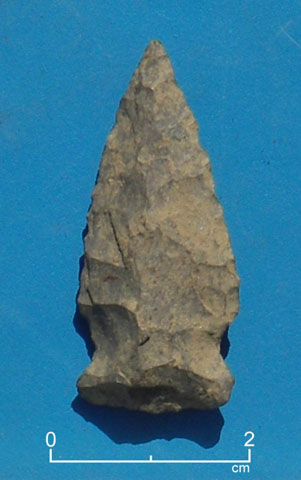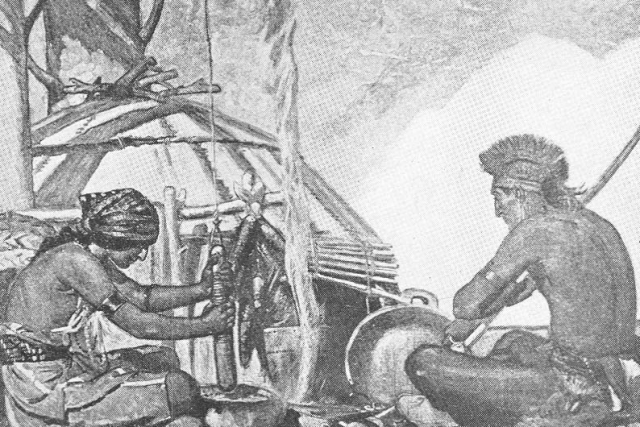| Native Americans (Prehistory to 1680) |
|
Archeological studies reveal that during at least periods before European explorers and colonists arrived, Native Americans inhabited Davids Island. By the mid-17th century, the New Rochelle area was inhabited by a Native American group known as the Siwanoys, who were possibly related to the earlier occupants.
Archeological Evidence from Davids Island Archeological evidence from Davids Island indicates that Native Americans visited the island at least as early as about 3,000 to 5,000 years ago. The earliest dateable artifact, a Normanskill-type projectile point, was used during what archeologists refer to as the Late Archaic period, a time when Native Americans in the northeastern U.S. moved from camp to camp, hunting and gathering food and other resources.
During this period, Davids Island, which was once joined with the mainland, probably became permanently isolated as an island as a result of sea level rise. Other sites around Long Island Sound from the Late Archaic period have yielded fish bones and oyster and clam shells, which indicate that Native Americans were using sea foods. Archeologists have found no such evidence on Davids Island, possibly because it has been lost to gradual coastal erosion or other landscape changes.
Native Americans (Prehistory to 1680)
The Siwanoys Some local histories record that in the mid-1600s, the New Rochelle coast was part of the territory of a Native American group called the Siwanoys. There is little historical information about this group, but they are said to have had a village on Davenport Neck, on the mainland close to Davids Island.
The Siwanoys were probably one of many small groups of Native Americans, each comprised of a few hundred people, living in the area now occupied by southeastern New York, New Jersey, eastern Pennsylvania, and coastal Delaware.
The people of these groups spoke Munsee or Unami, two closely-related Algonquian languages, and shared a broadly similar culture. Collectively, these groups comprised the Delaware Indians. The Delaware lived in village bands, each comprised of several sets of related families and led by a chief with limited political power.
The Siwanoys and other Delaware grew corn, beans and squash. They also relied extensively on game, fish, and wild plants for subsistence. Anthropologists believe that in this Native American culture, men typically hunted, fished, manufactured tools and utensils of stone, wood and fiber, acted as shamans or curers, and served as chiefs and warriors. Women were commonly responsible for planting and harvesting, cooking, housekeeping and child-rearing.
Native Americans began to withdraw from the coastal areas of New York in the 1600s, as European traders and colonists began to expand into the region. In 1654 the Englishman, Thomas Pell, acquired title for the land that now includes southern Westchester County from the Siwanoys. The subsequent history of the Siwanoys is unknown. |




 Native Americans (Prehistory to 1680)
Native Americans (Prehistory to 1680)


